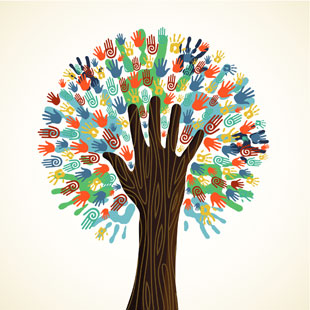According to Geoph Kozeny of Community Catalyst Project in San Francisco, California, an "intentional community is a group of people who have chosen to live together with a common purpose, working cooperatively to create a lifestyle that reflects their shared core values. The people may live together on a piece of rural land, in a suburban home, or in an urban neighborhood, and they may share a single residence or live in a cluster of dwellings."
This definition spans a wide variety of groups, including (but not limited to) communes, student cooperatives, land co-ops, cohousing groups, monasteries and ashrams, and farming collectives. Although they are quite diverse in philosophy and lifestyle, these groups all place a high priority on fostering a sense of community — a feeling of belonging and mutual support that is increasingly hard to find in mainstream Western society.
Intentional communities are like people — you can categorize them based on certain distinguishing characteristics, but no two are ever identical. Differences among them, whether obvious or subtle, can be attributed to variations in philosophy, in mission or project emphasis, in behavioral norms, or in the personality and style of the leaders (if the group has identified leaders) and the individual members.
The Fellowship for Intentional Community lists over 1,000 intentional communities in the United States and 250 in other places around the world.
If you are interested in living in an intentional community, or researching the possibilities, here are some resources that will give you a variety of perspectives.
